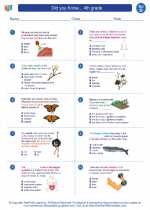Thermoregulation
Thermoregulation is the process by which the body maintains a stable internal temperature, despite changes in the external environment. It is essential for the body to function properly, as many chemical reactions and cellular processes are sensitive to temperature changes.
Key Concepts
- Homeostasis: Thermoregulation is a key aspect of homeostasis, which is the body's ability to maintain a stable internal environment.
- Temperature Regulation: The body regulates temperature through mechanisms such as sweating, shivering, and changes in blood flow to the skin.
- Thermoreceptors: Specialized nerve cells called thermoreceptors detect changes in temperature and send signals to the brain, which initiates appropriate responses.
- Heat Production and Loss: The body produces heat through metabolic processes and loses heat through radiation, conduction, convection, and evaporation.
- Regulatory Centers: The hypothalamus in the brain is a key regulatory center for thermoregulation, coordinating responses to maintain temperature within a narrow range.
Study Guide
Here are some key points to focus on when studying thermoregulation:
- Define thermoregulation and explain why it is important for the body.
- Describe the role of homeostasis in thermoregulation.
- Explain the mechanisms the body uses to regulate temperature, including sweating, shivering, and changes in blood flow.
- Discuss the role of thermoreceptors in detecting temperature changes and initiating responses.
- Outline the ways in which the body produces and loses heat, and how these processes contribute to thermoregulation.
- Identify the key regulatory centers involved in thermoregulation, particularly the hypothalamus.
Practice Questions
Use these practice questions to test your understanding of thermoregulation:
- What is thermoregulation, and why is it important for the body?
- How does the body regulate temperature through sweating and shivering?
- What are thermoreceptors, and what role do they play in thermoregulation?
- Explain the ways in which the body produces and loses heat, and how these processes contribute to thermoregulation.
- Which part of the brain serves as a key regulatory center for thermoregulation?
◂Science Worksheets and Study Guides Fourth Grade. Did you Know... 4th grade
Study Guide Did you Know... 4th grade
Did you Know... 4th grade  Worksheet/Answer key
Worksheet/Answer key Did you Know... 4th grade
Did you Know... 4th grade  Worksheet/Answer key
Worksheet/Answer key Did you Know... 4th grade
Did you Know... 4th grade  Worksheet/Answer key
Worksheet/Answer key Did you Know... 4th grade
Did you Know... 4th grade 

 Worksheet/Answer key
Worksheet/Answer key
 Worksheet/Answer key
Worksheet/Answer key
 Worksheet/Answer key
Worksheet/Answer key

The resources above cover the following skills:
Core Ideas for Knowing Science
Life Science
Organisms are organized on a cellular basis and have a finite life span.